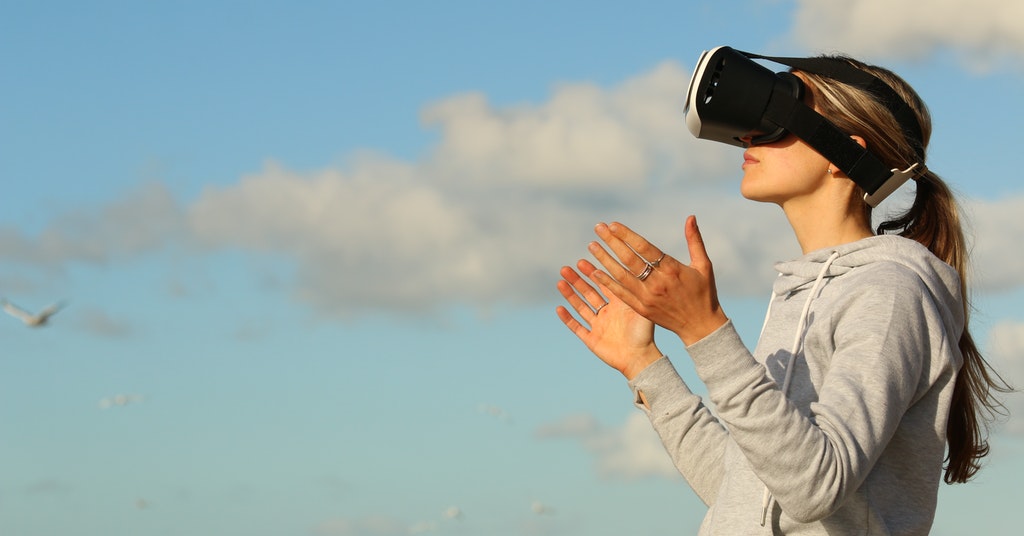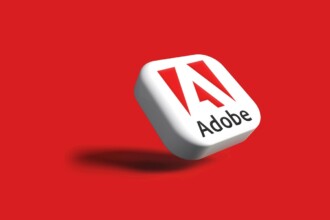Today we’ll discuss the reasons to implement these innovative technologies in your business strategy, along with the possible use cases

How VR and AR can enhance your business. Source: pexels.com
Reality is subjective, especially if it combines both physical and virtual elements. With popular AR apps, people can try on different looks, put themselves in various settings, and pretend to be movie characters. Except for the obvious fun, using VR and AR in business can be also profitable.
VR and AR defined
Virtual reality and augmented reality are similar notions that are often confused. Therefore, we feel obliged to clarify the difference before speaking about their application in business.
Virtual reality (VR) is a computer-generated environment that simulates the objects and physical characteristics of the real world. Combining auditory, visual, and sensual stimuli creates an elaborate illusion. It has immersive nature and gives a sensation of the user’s presence in the virtual surroundings. VR effects are usually achieved via special equipment such as headsets or multi-projected room designs.
Augmented reality (AR) is a subtype of mixed virtual reality. It uses virtual elements to overlay the real-world environment. Thus, both real and virtual objects intertwine to change the user’s perception. The overlaid sensory information can be constructive (adding something to the natural environment), or destructive (masking elements of the natural environment).
Use cases
VR and AR are effectively applied in many industries:
- gaming & gambling
- military training & law enforcement
- automotive production
- healthcare & wellbeing
- tourism
- entertainment
- retail
- real estate
- education
- sports
- arts & design
- mass media
The virtual technologies are used both internally (i.e. to train new employees, visualize projects and products) and externally (catering to customers’ needs). Either way, they help enhance the company’s market position. Let’s discover the main ways to use VR and AR in business.
Constructing new objects
Building a new house, shopping mall, or any other public place requires thorough planning. Pure imagination and paper drafts give you an idea of the project. However, the designing team will get better results if a project is visualized with VR. Virtual building images help owners, designers, and contractors to reach a mutual understanding of the tiniest construction/design details. It’s truly beneficial for the customers.
What looks good on paper may appear different in 3D surroundings. Hence, the building owners may be unsatisfied with some designer solutions and demand changes. That’s a waste of time and money. Alternatively, using VR, clients get the ability to make changes virtually for free before actual construction has begun. Moreover, when it deals with specific-purpose buildings like hospitals, law enforcement offices, sports centers, schools, etc., the parties involved can better express their professional needs in space planning.
With AR, designers can also see their building designs in their exact future locations. This allows architects to visualize their projects within the natural topography and provides them with data about the site that wasn’t previously available to them. For instance, they can take into account the position of the sun throughout the day in modeling the windows’ positions and inner lighting.
In addition, building expensive vehicles, vessels, machinery, spacecraft, and tech objects can be facilitated by VR. Brands such as BMW, Ford, Mercedes, andJaguar Land Rover use VR to check the visual design and technical functions of the vehicle before any money has been spent on physically manufacturing the parts. For the first two years of implementation, Jaguar Land Rover’s virtual reality system has saved more than £8m in vehicle development costs.
Jaguar now also virtually tests the design of the new factories used to assemble the vehicles. Since 2015, BMW has been collaborating with video game developer Epic Games. In the creation of its BMW iX model, they used advanced gaming technology to simulate journeys through cities. Thus, it was possible to test additional aspects including visibility over the area around the car, i.e. how different viewing angles and seating positions affect the view.
Staff training
Military, law enforcement, and security personnel are increasingly using AR and VR tools to train in simulated scenarios complete with visual, auditory, and physical stimuli. It gives trainees some experience in emergency situations without endangering them. VR can be also used to simulate working with sensitive equipment in any dangerous working environment. Overall, VR safety training is beneficial for every industry and, especially, for high-risk jobs.
Thus, NASA is using VR to prepare astronauts for spacewalks and manipulating objects in zero gravity. The largest construction company in the United States Bechtel improves safety on construction sites via immersive virtual training experiences and the use of video-game-like controls. It has also been testing AR to supplement training activities in the field and improve the quality of safety procedures during service or maintenance activities. Thus, 360° spherical imagery can create a live view of the surrounding environment, which can be augmented using wearables or mobile devices. Users can then tag and highlight safety points throughout the construction site.
Besides risky environments, VR training is also helpful for corporate learning and holding professional educational events. For example, training for soft skills is made more efficient with immersive courses from Virtualspeech. These award-winning training sessions combine e-learning with VR training and simulations so you can learn from experience in realistic scenarios. Employees enrolling their staff into training, get access to the admin dashboard to monitor employee performance and gain data-driven insights.
When it comes to AR, professional training was one of its original purposes. According to a recent study, AR can substantially improve training, as it increases concentration and leads to greater learning retention. The results of that enhanced training are 60% faster learning, 50% faster performance, 60% less material used, and a 90% reduction in mistakes. See-What-I-See (SWIS) AR smart glasses give workers an opportunity to get real-time remote assistance from more skilled and qualified experts. When non-standard problems occur, there is no need to relocate senior workers from wherever they are to solve the problem. Less skilled employees can deal with the issue first-hand with careful guidance.
In medicine, virtual reality systems similar to the one created by the Colorado startup Surgical Theater are helping to train residents, assist surgeons in planning upcoming operations as well as help them in operating rooms, and educate patients about their health issues. Moreover, VR educational platforms like Fundamental Surgery allow students to learn the use of products and procedures in an immersive VR surgical environment from the comfort of one’s own home.
Showcase
Displaying the products remotely and allowing to test them with the help of VR/AR technologies may become a key strategy for retailers in times of enhanced healthcare safety measures.
Thus, Sephora beauty empire keeps growing while many other retailers are crushed by the coronavirus pandemic. It’s possible since the famous brand leverages AR for both in-store and in-app makeup trials. Sephora’s proprietary app has an AI extension called Virtual Artist. It uses facial recognition technology to allow the client to virtually try on makeup products. The app then provides online links for the chosen shades of products or gives instructions on where they can be found in a store. Meanwhile, its bricks-and-mortar locations feature 3D augmented reality mirrors, able to scan and save your samples directly into the app.
Real estate agencies are using virtual tools to allow customers to explore houses online. Matterport has already created digital twins for thousands of homes using its proprietary hardware. At the same time, companies such as roOomy offer VR and AR services to market virtually staged properties.
There are two common types of 3D virtual property tours:
- Guided visits – similar to promotional content, presented either in a fully virtual format or in the form of 360-degree videos (which are considered a type of VR). All agents need is a panoramic camera to capture 360-degree video. Clients should wear a VR headset (a simple device such as Google Cardboard is enough) to get the most immersive experience.
- Interactive visits that let users choose where to move within a property by clicking on special hotspots in the field of view. Creating interactive virtual home tours is more complicated, but you can show properties more efficiently.
In 2015, the travel agency Thomas Cook partnered with Visualise to offer an in-store virtual reality experience ‘Try Before You Fly’. Clients used Samsung Gear VR to enjoy holiday experiences, such as a helicopter tour of Manhattan, a trip to the pool in Rhodes, visiting the Egyptian pyramids, or taking a walk along the OCBC Skyway in Singapore. The company witnessed a 190% uplift in New York excursion bookings after people tried the 5-minute version of the holiday in VR.
Entertainment
Both virtual and augmented reality can bring some color to everyone’s daily routines. It is clear that these technologies are used in the gaming and entertainment industries. However, they may also liven any business that implements gamification elements in customer experience.
Coca-Cola seems to know it well, having created a beautiful Christmas AR campaign that brought the magic of the Polar Bears to life. The company also provided VR Santa’s sleigh experience to the crowds gathered around Christmas trucks.
SEE ALSO:








